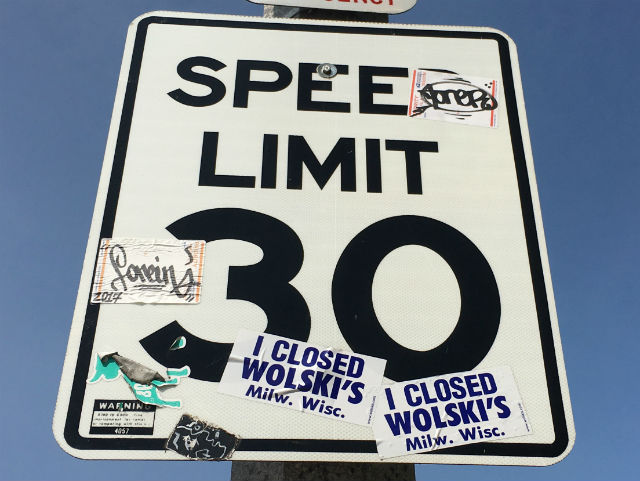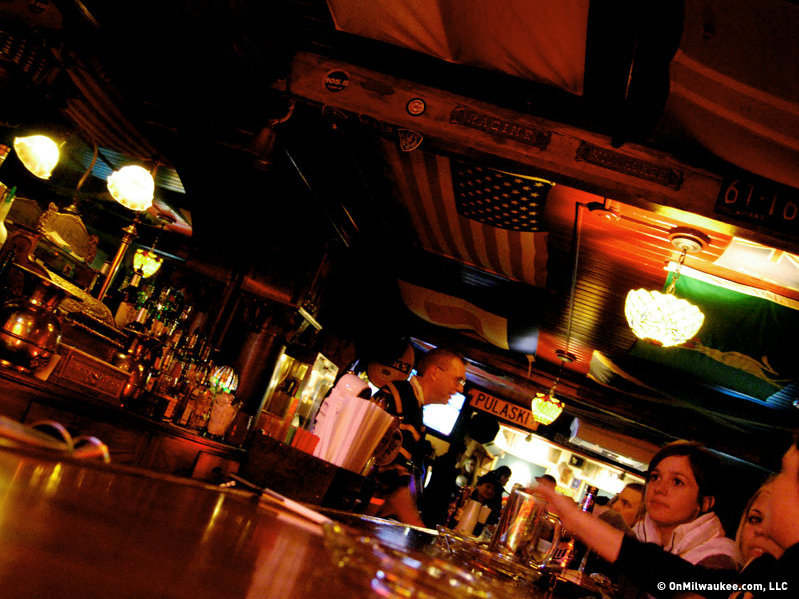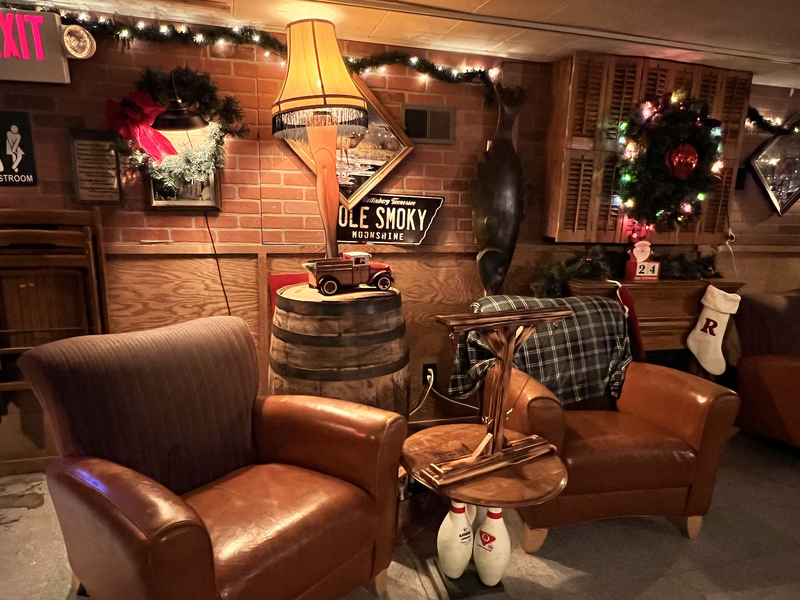"Bar Month" at OnMilwaukee is brought to you by Miller Brewing Company, calling Milwaukee home since 1855. For the entire month of March, we're serving up fun articles on bars, clubs and beverages – including guides, the latest trends, bar reviews, the results of our Best of Bars poll and more. Grab a designated driver and dive in!
Let’s go ahead and issue an immediate disclaimer here right away: Wolski’s is definitively not a hidden gem. In terms of global brand awareness, it’s probably among the least hidden, thanks to its iconic slogan, and on the local ubiquitous T-shirt landscape is perhaps bested only by Gruber Law Offices.
In fact, OnMilwaukee has written about Wolski’s Tavern more than 20 times in the past 10 years, including naming it Best Brady Street Area Bar from 2009-11. The 108-year-old Polish institution on the Lower East Side has been lauded countless times by media outlets, politicians and loyal patrons. But just because Wolski’s has been appreciated before doesn’t mean it shouldn’t be praised again. So here we are.
There’s a framed city resolution on the wall at Wolski’s, signed by Common Council President Willie Hines Jr. in 2008, that perfectly encapsulates the bar: "hard to find, harder still to leave." Indeed, if you can get there – and you should be able to get there; we have GPS now – down on winding Pulaski Street, surrounded by century-old Victorian houses, you do find it somehow difficult to depart early, aka before close, which is perhaps why so many people have felt compelled to commemorate that accomplishment.
Wolski’s is a dive bar, incontrovertibly. But it’s a destination dive bar, the kind of place you seek out, rather than stumble into, because it appeals to everyone and serves whatever purpose you want it to. It’s not a sports bar or a dance bar or a cocktail lounge; the theme is itself, Wolski’s – its own history, location, worldwide ambassadors, closing time. It’s Polish, certainly, but a little bit Irish, with a lot of darts and, through and through, Milwaukee. Wolski’s is welcoming, utilitarian and popular. Ineffably, it’s hard not to like.

Wolski’s, with its mountain of merchandise – at least a dozen different shirt designs, nearly that many hats, the notorious bumper stickers and even panties, all stating, "I Closed Wolski’s" – is rare in that its flagrant self-promotion isn’t alienating; it’s endearing actually, sort of appropriately deserved.
If you happen to be there in the daytime, what little light is allowed in refracts through dark stained glass windows. Otherwise, the nightly mood is conveyed by vintage shaded table lamps, which, atop the impressive wood bar, cast a warm, dark red glow across the tavern. Two original cash registers handle transactions, an old-fashioned popcorn maker supplies customers with a free, easy and unending snack and there are old street signs, including one for Pulaski Street and another that says Cream City.
A variety of unfurled flags are spread on the ceiling, many of countries, some of colleges like Old Dominion, a POW MIA one; bronzish plaques on the back walls pay tribute to the darts legends of the past; there’s a letter from the city of Kokomo, Indiana, that bestows upon all Wolski’s patrons the esteem of being honorary Kokomo residents while they’re in the bar. Inside the squeaky-clean bathroom, a number of state license plates are hung inside the stall; posters of pugilist Guy Christie adorn one wall, newspaper articles are showcased elsewhere and a Milwaukee Braves 1959 National League pennant is almost inconspicuous near the door.
Everything inside the bar feels like it has a worthwhile origin story, that it wasn’t just random crap picked up at a rummage sale but rather brought here intentionally, chosen with Wolski’s in mind.
That’s especially true of the framed photos of patrons wearing "I Closed Wolski’s" shirts from all over the world, in Africa, Europe and Afghanistan, on mountaintops, in sailboats and jet planes. The tale of how the slogan came to be is well-worn by now: In the mid-1970s, a group of regulars who drank there from noon until 2 a.m. felt unappreciated despite their patronage, so the bartender at the time made them stickers that said "I Closed Wolski’s" to mollify them. The gimmick took off, as any good grassroots movement would, and now the humble neighborhood bar is a Milwaukee must-go, even recommended by hotels for visiting tourists.

Wolski’s has a rich history dating back more than a century. In 1907, co-owner Dennis Bondar's great-grandfather bought the building, which was on Brady Street at the time, next to the Up & Under Pub. A father of 13 kids, he didn't think it was safe to live with his family on a main road like Brady Street, so he had the physical building moved to its present location.
In 1973, brothers Bernard and Michael Bondar took over Wolski's, which is named for their grandmother's side of the family, and later, youngest brother Dennis began bartending and became a partner in the business. Since the 70s, the brothers built a new main bar and removed the family living quarters which were located where the dart room is now.
On a random weeknight, some regulars sit talking at the bar, a couple show each other photos on their phones and a few guys play darts in the back. Eric Clapton is on in the background, while college basketball plays on TV. There are about 15 bars on tap, as well as many of the same domestic options in bottles, and they’re destination-dive-bar cheap, which is to say $4 or $5. In the warmer months, a small patio offers an outdoor reprieve, which is especially appreciated on crowded weekend nights.
For more than 100 years, Wolski’s has remained a popular spot just by being Wolski’s, a classic, easygoing and authentic bar where the theme is itself. Even if you don’t close it, and even though it’s not hidden, Wolski’s is a true Milwaukee gem.
Born in Milwaukee but a product of Shorewood High School (go ‘Hounds!) and Northwestern University (go ‘Cats!), Jimmy never knew the schoolboy bliss of cheering for a winning football, basketball or baseball team. So he ditched being a fan in order to cover sports professionally - occasionally objectively, always passionately. He's lived in Chicago, New York and Dallas, but now resides again in his beloved Brew City and is an ardent attacker of the notorious Milwaukee Inferiority Complex.
After interning at print publications like Birds and Blooms (official motto: "America's #1 backyard birding and gardening magazine!"), Sports Illustrated (unofficial motto: "Subscribe and save up to 90% off the cover price!") and The Dallas Morning News (a newspaper!), Jimmy worked for web outlets like CBSSports.com, where he was a Packers beat reporter, and FOX Sports Wisconsin, where he managed digital content. He's a proponent and frequent user of em dashes, parenthetical asides, descriptive appositives and, really, anything that makes his sentences longer and more needlessly complex.
Jimmy appreciates references to late '90s Brewers and Bucks players and is the curator of the unofficial John Jaha Hall of Fame. He also enjoys running, biking and soccer, but isn't too annoying about them. He writes about sports - both mainstream and unconventional - and non-sports, including history, music, food, art and even golf (just kidding!), and welcomes reader suggestions for off-the-beaten-path story ideas.







